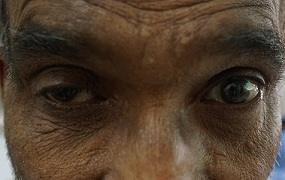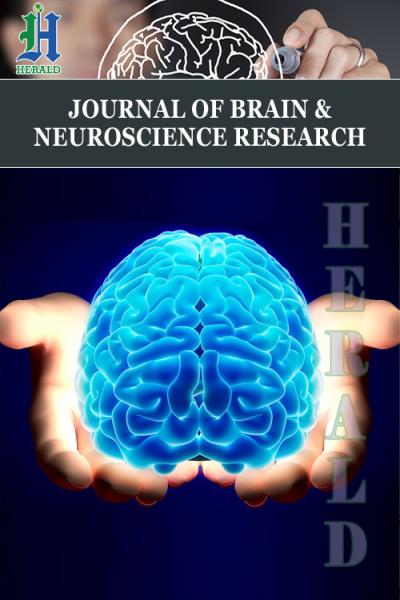
Cranial Nerve Palsies as Initial Presentation of Pyogenic Meningitis in Adult: A Case Report
*Corresponding Author(s):
Anam AnisConsultant Neurologist, PAF Hospital, Islamabad, Pakistan
Email:anamanees@googlemail.com
Abstract
Pyogenic meningitis is common infectious disease that can present in any age group. The most common presentation include fever ,headache, vomiting , presence of signs of meningeal irritation and mild or no signs of focal neurological deficits in adults. Complications associated with pyogenic meningitis includes infarcts, 8th and 7th cranial nerve palsies which is more common in pediatric age group. It usually manifests during the course of illness rather than as initial presentation .However acute onset of oculomotor nerve ,abducent or trochlear nerve involvement is uncommon presentation of pyogenic meningitis. Hence, cranial nerve involvement can be rare but possible presenting feature of pyogenic meningitis in adults.
Keywords
Cranial nerve palsy; Pyogenic meningitis
Case Report
Cranial nerve involvement is rare complication of nontuberculous meningitis. We report a case of 55 years old male, baker by profession presented through emergency department because of high grade fever associated with rigors and chills, headache and double vision in left lateral gaze. Headache was episodic and associated with photophobia and phonophobia. On neurological examination conscious level was normal .There was right complete third nerve and fourth nerve palsy & left sixth nerve palsy .Signs of meningeal irritation were negative. Fundus examination showed no papilledema. There was no limb weakness and plantars were bilaterally downgoing. Blood complete picture showed WBCs 7740/mm3 with 80% neutrophils .ESR 22. Lumber puncture was performed which obtained turbid CSF. CSF analysis showed WBCs 1216/mm3 with 66% neutrophils and 34% monophils, glucose

Discussion
Bacterial meningitis is a common and life threatening disease. Approximiately 1.2 M cases occur annually.meningitis is amongst 10 most common infectious disorder proving fatal [1] 95 % of the patients have 2 out of 4 symptoms of headache ,neck stiffness ,altered mental status and focal deficit [2]. Cranial nerve palsies either because of basilar meningitis, infarcts or raised intracranial pressure is somewhat common presentation in children with pyogenic meningitis. Most common cause of third and fourth cranial nerve palsies in children is congenital [3]. Involvement of cranial nerves at presentation of pyogenic meningitis is rare [4].In children with bacterial meningitis seventh and eighth cranial nerve palsies are common but oculomotor nerve palsy as acute presenting feature of disease is rare and reported only in children [5].Adults presenting with cranial nerve palsies raise the suspicion of chronic slowly evolving pathogen and it can occur with few bacterial agents ,fungal and non tuberculous mycobacterium [6].Cranial nerve involvement indicates basilar meningitis reported with streptococcus pneumoniae [6]. Abducent nerve is involved in 4.5% cases of acute meningitis but ophthalmoplegia is rare at presentation [7]. In our case report adult with 3rd, 4th and 6th cranial nerve palsies was found to have pyogenic meningitis that responded well to antibiotics .Neuroimaging showed infarcts at insular cortex , mid brain and cerebellum.15-20% of bacterial meningitis cause infarcts but it occurs during the established disease [7-8]. Mechanism of infarct in pyogenic meningitis includes septic arteritis, end arteritis obliterans, venothrombophilibitis or thromboembolic event [8] .In bacterial meningitis stroke is mostly ischemic ;however hemorrhagic stroke and sub arachanoid hemorrhage are rare [7].Cranial nerve palsies in pyogenic meningitis has prognostic significance as 1/3rd of the patients has neurological sequelae after acute meningitis [9].Patients need long term follow up 3.its involvement has established long term mortality and disability [4-5]. Early identification and management can prevent morbidity [10] and mortality .It is important to have insight of uncommon presentations of common disorders that obviates confusion and has an impact [11-12] on long term benefit of patients.
Conclusion
Cranial neuropathy is rare presentation of acute bacterial meningitis .Tuberculous meningitis and meningeal carcinomatosis is an important differential in our case because of cranial nerve involvement .In our case no evidence of solid tumour was found on imaging and tumour markers were negative as well.the High mortality rate associated with acute pyogenic meningitis makes the diagnosis critical.while confronting cases with clinical triad of meningitis along with cranial nerve involvement the diagnosis of acute bacterial meningitis should be top of the list
References
- Kazmi SS, Nejat F, Khotaei GT, Ghaheri H (2006) Ptosis as a presenting feature of bacterial meningitis. J Pediatric Infectious Disease 25: 570.
- Van de Beek D, De Gans J, Spanjaard L, Weisfelt M, Reitsma JB, et al. (2004) Clinical features and prognostic factors in adults with bacterial meningitis. New England Journal of Medicine 351: 1849-1859.
- Holmes JM, Mutyala S, Maus TL, Grill R, Hodge DO, et al. (1999) Pediatric third, fourth, and sixth nerve palsies: A population-based study. American journal of ophthalmology 127: 388-392.
- Braun JS, Sublett JE, Freyer D, Mitchell TJ, Cleveland JL, et al. (2002) Pneumococcal pneumolysin and H2O2 mediate brain cell apoptosis during meningitis. The Journal of clinical investigation 109: 19-27.
- Bennett JE, Dolin R, Blaser MJ (2019) Mandell, Douglas, and Bennett's Principles and Practice of Infectious Diseases: 2-Volume Set. Elsevier Health Sciences.
- Moghtaderi A, Alavi-Naini R, Rashki S (2013) Cranial nerve palsy as a factor to differentiate tuberculous meningitis from acute bacterial meningitis. Acta Medica Iranica 113-118.
- Holmes JM, Mutyala S, Maus TL, Grill R, Hodge DO, et al. (1999) Pediatric third, fourth, and sixth nerve palsies: A population-based study. American journal of ophthalmology 127: 388-392.
- Van De Beek D, Patel R, Wijdicks EF (2007) Meningococcal meningitis with brainstem infarction. Archives of neurology 64: 1350-1351.
- Perry JR, Bilbao JM, Gray T (1992) Fatal basilar vasculopathy complicating bacterial meningitis. Stroke 23: 1175-1178.
- Chu ML, Litman N, Kaufman DM, Shinnar S (1990) Cranial nerve palsies in Streptococcus pneumoniae meningitis. Pediatric neurology 6: 209-210.
- Sharma P, Garg RK, Verma R, Singh MK, Shukla R (2011) Incidence, predictors and prognostic value of cranial nerve involvement in patients with tuberculous meningitis: a retrospective evaluation. European journal of internal medicine 22: 289-295.
- Tunkel AR, Calderwood S, Thorner A (2017) Clinical features and diagnosis of acute bacterial meningitis in adults.
Citation: Anis A, Ather I (2022) Cranial Nerve Palsies as Initial Presentation of Pyogenic Meningitis in Adult: A Case Report. J Brain Neursci 6: 022.
Copyright: © 2022 Anam Anis, et al. This is an open-access article distributed under the terms of the Creative Commons Attribution License, which permits unrestricted use, distribution, and reproduction in any medium, provided the original author and source are credited.

